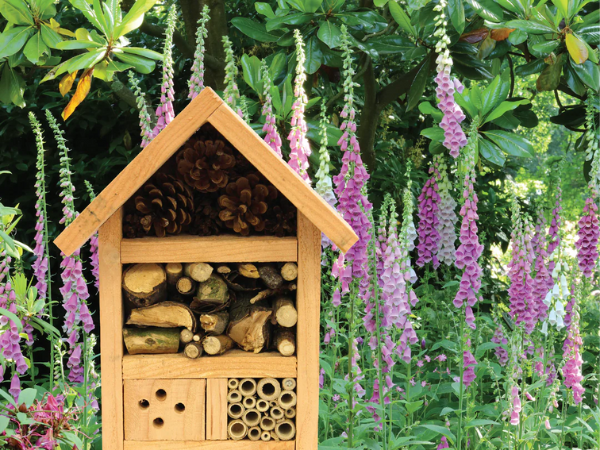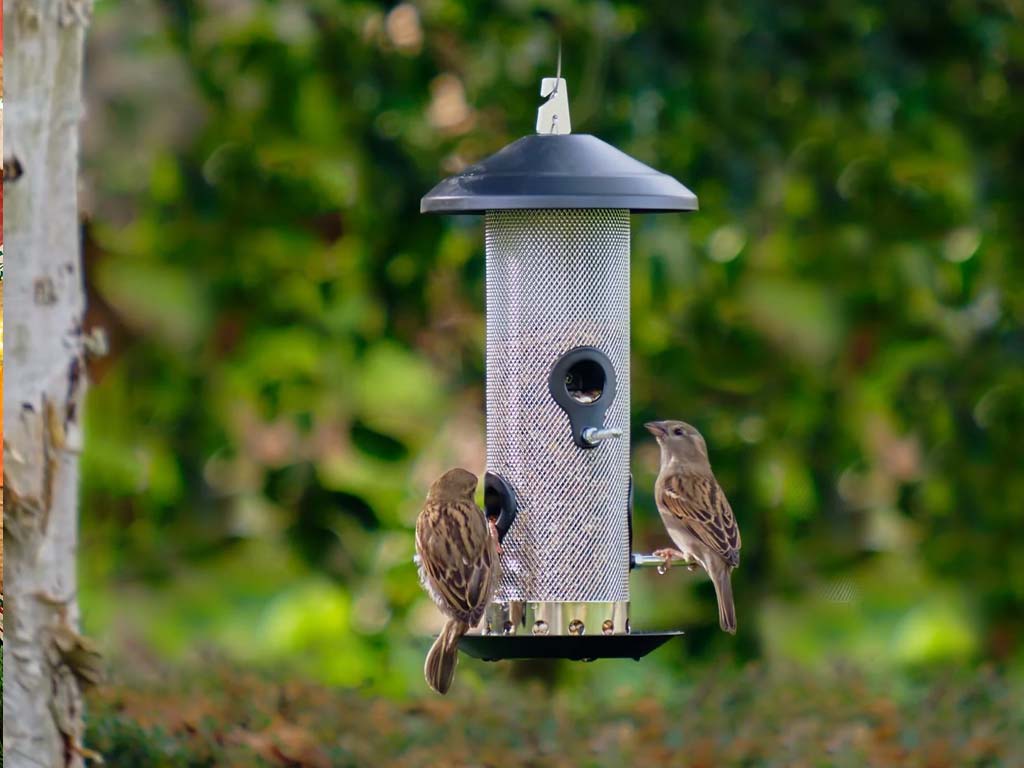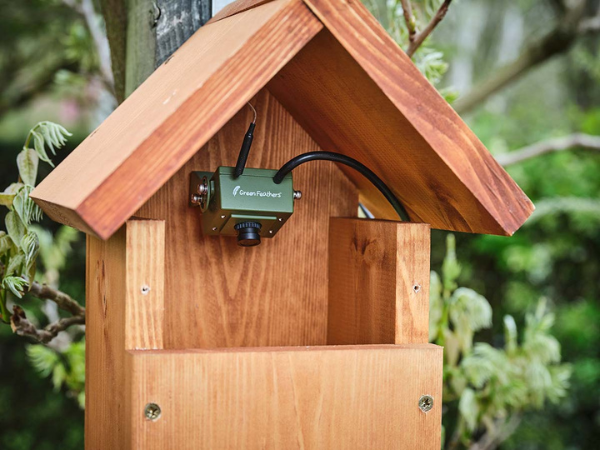A garden pond is more than just a water feature - it's a transformative addition to your outdoor space.
Whether you’re seeking a serene retreat, a thriving habitat for your wildlife-friendly garden, or a stunning focal point, a pond offers endless rewards for both you and your garden. From fostering biodiversity to creating a relaxing oasis, the benefits of a garden pond extend far beyond its visual appeal.
In this post, we’ll explore all the benefits of building a garden pond, and provide a comprehensive step-by-step guide on how to build one. Plus, we’ll share essential maintenance tips and safety advice to ensure your pond remains a vibrant wildlife haven and secure feature for years to come.
Let’s dive into the joys of creating and caring for your garden pond!
Benefits of a pond in the garden

Building a garden pond can offer so many wonderful benefits to your lifestyle, family and garden. Here are seven reasons why you should consider building a garden pond in your backyard:
1. Wildlife habitat
A garden pond can attract all types of local wildlife, including birds, frogs, and beneficial insects, as it provides a water source for creatures that might not have easy access to it in your area elsewhere - making it the perfect spot to add a wildlife camera and capture all the visitors that drop by!
What’s more, if you also decide to introduce fish or other aquatic life to your garden pond, it will become a thriving ecosystem and microhabitat that can support biodiversity and contribute to wildlife conservation in your local area.
2. Environmental benefit
Beyond creating new habitats and supporting your local ecosystems and biodiversity, garden ponds can also have other environmental benefits - such as water conservation. Your garden pond can be designed to collect and retain rainwater, reducing water runoff in your garden and helping you to do your bit in conserving valuable water resources.
3. Educational opportunity
Promoting ecosystems and biodiversity with a garden pond can provide families, especially those with children, to learn and engage more with their local wildlife - including the importance of conservation. From birds flying through to the insects that will make their home around it (perhaps even in a DIY bug hotel), garden ponds provide the perfect opportunity to get your family started in wildlife and bird-watching!
And it’s not just the wildlife that can provide education opportunities either. Garden ponds can help your family build your gardening skills and knowledge, including learning how to care for aquatic plants.
4. Seasonal interest
Whilst your pond may feel more inviting to be around during the warmer months, they can actually offer a lot of interest all year round. Though in the spring and summer you may see more consistent wildlife and activity around your garden pond, in the winter, a frozen pond can look incredibly calm, and the change in plants and wildlife offers you a wide variety of experiences throughout the year.
5. Creates a cool oasis
Does your family tend to stay indoors when it gets too hot in the summer? Whilst you may think you need to block out the sun and stay cool indoors, ponds can act as a natural air conditioner in your garden. Water has a cooling effect, so having a pond in your garden can help regulate temperatures, creating your own garden microclimate.
6. Aesthetic appeal
A garden pond can also be a stunning focal point in your garden and add value to your property - should you ever decide to sell it . The reflective water, combined with surrounding plants and rocks, can instantly create a calm, peaceful environment, making your garden a serene sanctuary for all.
7. Stress relief and relaxation
Talking of feeling calm, did you know that spending time by your garden pond can have a mediative, stress-reducing effect? The presence of water is known to promote relaxation, and the peaceful sounds of water can help you unwind after a long day. Plus, it is well known that connecting with wildlife can also have a positive effect on your mental health. So, with all those resident fishes or feathered friends coming to visit, you’re essentially creating an outdoor sanctuary, perfect for meditation, reading, or simply enjoying nature.
How to build a garden pond

Now you know just how rewarding a garden pond can be, it’s time to get one build in your back yard! Here's a step-by-step guide to build a garden pond:
Step 1: Plan your pond
First, you need to plan your garden pond.
Choose a location for your pond - ideally somewhere that gets around 4-6 hours of sunlight a day, but avoids it all the time. Try to avoid placing it around trees, to avoid debris falling in or root issues in years to come.
Then you need to decide how big you want it to be. If you're new to pond building, a smaller one is probably going to be more manageable - around 4ft by 6ft. Use your garden hose of some string to outline the size and shape on the ground.
It’s also important to check if your local area has rules for digging ponds. Garden ponds typically don’t require planning permission, but it’s always good to check with your local authority before you start.
Step 2: Gather your materials
To build a garden pond, you will need:
- Shovel and other digging tools
- Tape measure
- Spirit level
- Pond underlayment
- Pond liner
- Pond pump
- Pond filter
- Rocks and gravel
- Plants (optional)
Step 3: Dig your pond

Once you know where you want your pond, the size you want it to be and have your tools and materials at the ready, it’s time to dig it out.
Around the hose or string, dig out the area you outlined. For small ponds, you want to dig around 18 to 24 inches deep, or 2 to 3 feet for larger ones. You will also need to create a shallow shelf, around 6 to 12 inches deep, around the edge of your pond for plants.
When digging your pond, you need to ensure that the edges of the pond are level, to prevent water from spilling out. Use a spirit level around all edges, to check.
Step 4: Add liner and underlayment
Now that your pond is dug out, you need to line it.
First, lay the underlayment on the bottom and sides of the pond to protect the liner from sharp rocks or roots. Then, place the liner over the underlayment, leaving enough excess around the edges to secure it later.
Step 5: Install your pump and filter
Once your pond is lined, you will need to install the pump and filter - this is what will circulate the water and keep it fresh.
Place the pump at the deepest point of your pond and run tubing from the pump to where the water will circulate, such as a small waterfall or fountain (if you’re installing one of those). Then, hide the tubing and pump with rocks or plants.
Step 6: Fill your pond
As your pond is now almost fully operational, it’s time to fill it!
Slowly fill the pond with water from a garden hose. As the water fills, adjust the liner to ensure it fits snugly against the pond walls.
Step 7: Decorate and landscape
Finally, your pond is done - you just need to decorate it!
Use rocks and gravel to cover the liner edges, to give your garden pond a natural look. We also recommend adding aquatic plants like water lilies, marginals, or oxygenators to improve water quality and attract wildlife.
You might also want to consider adding fish like goldfish or koi, but only after the water has been stabilised.
Important garden pond maintenance and care

Maintaining your garden pond is essential for its health and beauty. Proper care makes sure that your water remains clean, your plants and fish thrive, and the pond stays a vibrant and wildlife-friendly feature in your garden.
Here are the key aspects of pond maintenance and care you need to keep in mind:
1. Keep the water clean
Keeping your garden pond water clean is so incredibly important to keep your pond ecosystem thriving.
This should involve regular skimming with a net to remove debris, using a pond rake to pull out string algae, UV clarifiers or beneficial bacteria treatments microscopic algae (green water), and monthly partial water changes - replacing around 10-15% of your water to dilute toxins - with dechlorinated water.
2. Monitor your water quality
Along with keeping your water clean, you should also be regularly testing your water.
To test your water, you will need a testing kit to monitor the pH, ammonia, nitrites and nitrates. Following the results from the kit, adjust the levels with appropriate treatments, if needed.
3. Maintain equipment
To keep your pond equipment in tip-top condition, you need to keep it maintained!
Check your pond pump regularly for blockages and clean its filters to ensure proper water circulation. You should also be cleaning or replacing filters, as recommended by the manufacturer, to keep your pond water free of waste and debris. If you have airstones or diffusers, check those are functioning correctly - especially in the warmer months.
4. Inspect your pond regularly
Beyond your pump and filter, you should also be inspecting the whole of your garden pond.
Check the liner regularly and look for leaks or damage, and repair promptly to prevent water loss. Make sure to secure your edging materials, ensuring rocks and other materials remain stable and do not slip into the pond.
5. Take seasonal actions
Throughout the year, you will need to care for your pond in different ways.
In the spring, clean your pond thoroughly and remove any sludge from the bottom. Reintroduce plants and inspect liners or equipment for winter damage.
In the summer, focus on monitoring evaporation and top off your pond with water as needed. You may also need to provide shade with floating plants, to help regulate water temperature and prevent algae blooms.
In autumn, install netting over your pond to catch falling leaves. If you have fish, gradually reduce feeding them as temperatures drop.
Finally, in winter, prevent your pond from freezing completely by using a pond heater or aerator. If it does freeze, keep a small hole in the ice to allow gas exchange for fish.
6. Care for plants
Remember - it’s not just your pond that needs caring for, it’s your plants too!
Prune and trim your plants to remove dead or dying foliage. This will help to prevent rotting and maintain water quality. If you have many overgrown aquatic plants, replant them in the spring or begin to remove some. Use pond-safe fertilizer to support plant growth during the growing season.
7. Monitor and care for fish (if you have them)
If you have some puckered pals swimming around in your garden pond, it is crucial to monitor and care for them.
You should provide high-quality fish food sparingly to avoid overfeeding, and watch for signs of illness, such as lethargy, unusual swimming, or visible marks. Ensure that the number of fish is appropriate for your pond size to prevent stress and poor water quality.
8. Manage ecosystem balance
Remember, your garden pond isn’t just a garden feature - it’s its own ecosystem, and that needs to be managed appropriately.
Encourage beneficial bacteria by adding bacteria treatments to break down organic waste and improve water clarity, and introduce natural predators, such as snails and certain types of fish, that can help to control pond algae and pests. You should also use rocks, caves, or submerged plants, to create hiding spots for fish and other pond creatures.
9. Use eco-friendly products
If you want your garden pond to be wildlife-friendly, then you need to use eco-friendly products in it.
Avoid using chemical treatments that can harm plants, fish, and beneficial organisms, and instead use natural or pond-safe alternatives to control pests and algae.
Garden pond safety tips
When building and maintaining a garden pond, safety should always be your top priority. A pond can be a beautiful and peaceful feature in your garden, but it also presents certain risks, especially for children, pets, and even the ecosystem, if not properly managed.
Here are some important garden pond safety tips to ensure a safe and enjoyable outdoor space:
1. Supervise children and pets
If you have children or pets, they should always be supervised around your pong.
Never leave children or pets unsupervised around your pond, especially if they are under the age of 5. Even if the pond is shallow, there is still the potential for accidental falls or drownings. If your children are old enough to understand, educate them about pond safety - such as never running around the pond, not reaching in too far, and respecting the water.
2. Build shallow edges and gradual slopes
And on the message of children and pets around your pond, when building, you want to design for safety.
Ensure your pond has shallow edges that gradually slope down, rather than steep drop-offs - this makes it safer for children and pets who might accidentally fall in. If you have children playing near the pond, create a safe, shallow zone where they can wade without the risk of deep water. Steep walls can make it difficult to get out of the pond if someone falls in, whereas gradually sloping sides help to prevent accidents.
3. Consider pond depth and prepare rescue equipment
Moreover, when building your pond, you want to always be prepared for the worst.
Avoid making your pond too deep, especially if it’s in an area where children might access. Ideally, ponds should be no deeper than 2 to 3 feet in areas accessible to children, with deeper zones reserved for fish or specific plants. Keep a rescue hook, life preserver, or a long-reaching stick nearby in case someone falls in, as this can provide a quick way to assist someone without needing to jump into the water yourself.
4. Cover the pond
Another way to protect your children and pets (and to stop heron eating your pond fish) is to cover your pond. Whilst covering your garden pond may feel like you’re ruining the aesthetics of it, it could just save a life.
For extra protection, especially if you have young children or pets, consider installing a safety net, mesh cover, or pond netting. These can be placed over the pond to prevent falls but should be strong enough to support weight if necessary. A low fence or barrier around the pond (at least 3 feet high) can also act as a deterrent to keep children and pets from accessing the water unsupervised.
If your pond is small or has a water feature like a fountain or waterfall, you might also want to consider using a mesh cover that can support the weight of a child or animal and prevent them from falling in.
5. Secure water features
And talking of water features, you want to ensure that they are secure.
If your pond includes fountains or waterfalls, make sure they are properly secured to avoid any potential hazards. Keep cords and wires hidden or out of reach to prevent tripping or accidental pulling.
What’s more, if you have electrical pumps or lights in or around your pond, make sure all electrical components are properly waterproofed and grounded. Always use outdoor-rated extension cords and plug into GFCI outlets to prevent electrical shocks.
6. Ensure proper pump and filter placement
Your pond pump and placement filter could also be a hidden hazard in your garden - especially around small children and pets.
Ensure your pond’s pump and filtration system are installed safely and are out of reach of small children and pets. Keep power cords hidden or in protective tubing to prevent tripping hazards. Regularly check that all pumps and filters are working correctly and have no exposed electrical components.
7. Maintain clear water
Whilst you want to keep your water clean for both aesthetic reasons and your ecosystem’s health, dirty water can hide a multitude of hazards.
Algae blooms can create slippery and hazardous surfaces around your pond edges, especially for pets or children. Regularly clean and maintain your pond to keep the water clear. Keep the water free of debris, as they can create obstructions or make it difficult to spot hazards - proper filtration will help with this.
8. Avoid sharp objects
Sharp objects can also pose a huge hazard around ponds - especially when cleaning out your pond.
When lining your pond with rocks, be mindful of sharp edges that could cause injury. Use smooth stones or place them in a way that they are less likely to cause harm. Always check for any hidden sharp or jagged objects that could pose a risk, especially when cleaning or maintaining the pond. Always wear gloves when handling the pond’s components.
9. Learn about fish and aquatic plant safety
It’s not just your family and pets that you need to consider safety for, either. It’s important, when building a garden pond, to also learn about fish and aquatic plant safety too.
If you introduce fish into your pond, ensure they are appropriate for your pond size and water conditions. Avoid introducing species that are toxic to other pond life or invasive to your local environment. Regularly check the water quality to ensure it’s safe for both plants and fish, as poor water quality can cause harm to aquatic life and create unhealthy conditions.
10. Use non-toxic materials
And on the lines of fish and aquatic plant safety, this also includes using non-toxic materials.
When building your pond, only use non-toxic materials for your pond liner and other components, to avoid contamination of the water - especially if you plan to have fish or plants. This ensures the water remains safe for aquatic life. If you’re using chemicals like algaecides, make sure they’re safe for your pond's ecosystem, including plants and animals. Ensure to always follow manufacturer guidelines carefully to avoid harming aquatic life.
Invested in making your garden a wildlife sanctuary for all? Contact us today for expert advice on how to make your garden a safe space for all creatures, big and small, with Green Feathers wildlife accessories, or explore our blog for more information resources.

























